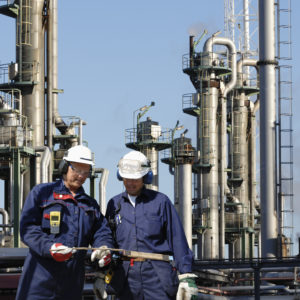After two years of low gasoline prices, American consumers are seeing a rise in costs at the pump. Between November of last year and the end of January, gasoline prices rose 7 percent nationally. The cause can be traced back to a November 2016 agreement between the international oil-producing cartel, OPEC, and Russia to cut oil production.
OPEC, Russia and other oil producers started dialing back their crude oil production in January and the effect on consumers is clear — higher gasoline and energy prices. Prices have already begun to creep up but some now forecast oil prices averaging $75 per barrel across 2017 — a 50 percent increase from current prices.
This is not the first time OPEC policy has caused prices to rise dramatically, but it may be the first time U.S. producers can push back. The days of Jimmy Carter asking Americans to turn down the heat and put on sweaters in response to OPEC production cuts are over. You can thank the shale revolution for that.
Since the shale revolution, the United States can serve as a counterweight to OPEC and Russian collusion. During the last two years of low oil prices and low revenue, successful fracking companies have increased efficiency, cut waste, acquired new oil leases and improved their technology. They now have the potential to increase U.S. oil production in response to rising prices.
This capacity to increase production quickly offers new opportunity. The shale revolution has enabled U.S. producers to invest in and begin — or restart — production more flexibly. Drilling new wells, reopening capped wells and bringing additional production online can now be accomplished in a matter of weeks, at lower costs. American ingenuity decidedly reshaped the energy market so that OPEC and Russia’s ability to raise prices does not go unchallenged.
It remains to be seen just how quickly U.S. producers can respond to falling overseas production and rising prices, but the signs are promising. OPEC’s goal through June is to produce 1.2 million barrels per day fewer then they did in 2016. The International Energy Agency conservatively estimates that increased U.S. production will mitigate these OPEC cuts by one-quarter or more in 2017. Other estimates are even more positive, and the potential for shale is even greater under the right circumstances.
While the U.S. government has not responded to Russian and OPEC collusion, U.S. energy policy could play a role in keeping gasoline and other fuel prices from rising too high. Policy changes could lower costs for domestic producers, increasing their competitiveness while helping improve American energy security.
The U.S. government should expedite permitting of oil production on federal land. Between 2008 and 2015, the number of onshore drilling permits the Bureau of Land Management issued dropped 47 percent. This trend should be reversed so that the country can truly benefit from its shale bounty. In addition, the Trump administration’s commitment to deregulation should help oil production and transportation as the United States faces the effects of rising prices.
OPEC, Russia and other non-OPEC partners benefit from centralized governments that are friendly to their oil industries, which are often state run. The cozy relationship between government and industry in those countries expedites their actions. To better allow U.S. producers to compete against this state influence, the United States should do the opposite and look for ways to reduce the regulatory burden on the domestic industry.
For the first time since 1973, U.S. producers are capable of countering the production moves of the international oil cartel. The speed and breadth of their ability to do so will directly affect what American consumers pay for energy. Reducing the regulatory burden on U.S. producers to allow them to better compete with Russia and OPEC should be a policy priority. A robust increase in shale production is the best strategy to prevent a return to $4 gasoline.

